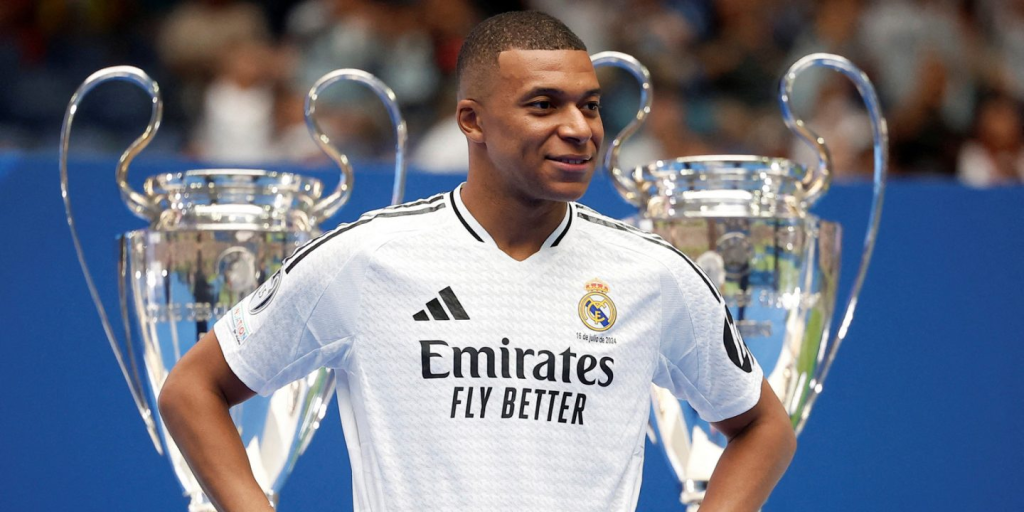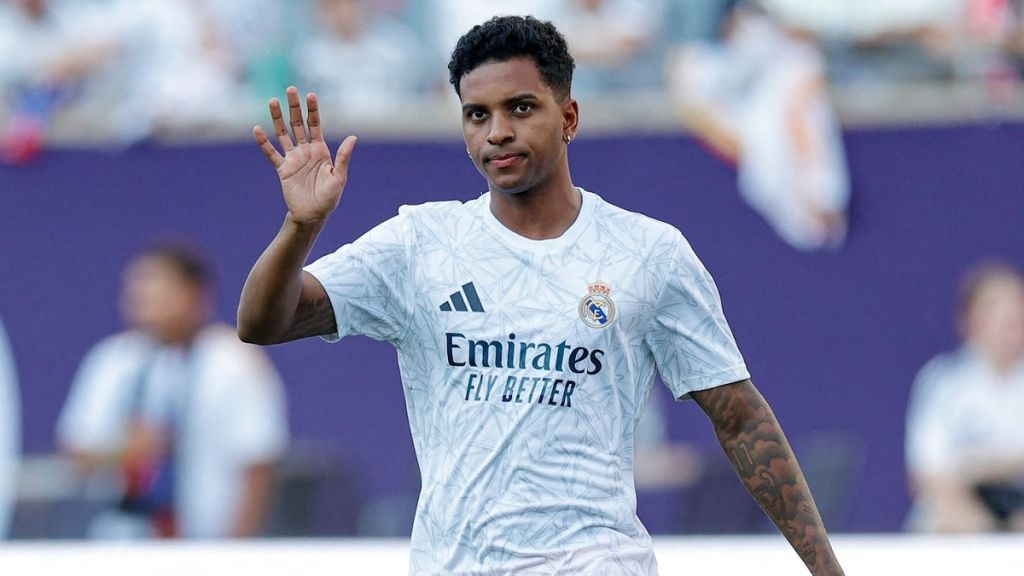In 2025, football changed the concept of market value. Figures no longer shock – they dictate the rules. The world’s most expensive footballers have become full-fledged financial assets, whose transfers exceed the budgets of entire associations. Demand is rising against the backdrop of intensified competition in the Champions League, the Premier League, La Liga and the Bundesliga. The financial strategy of clubs is now no longer based solely on trophies, but also on names that sell tickets, streaming, advertising and shareholder stability.
Capital dynamics
The valuation of a footballer in 2025 is based on a combination of indicators. Age, position, efficiency, stability, marketing weight – all of these factors influence transfer value. Clubs invest in assets with growth potential. A young striker with 20 goals per season will become more expensive faster than a veteran with a reputation. The presence of trophies is an argument, but not a decisive one. Statistics from the last 12 months, participation in top games, versatility and influence on the team’s style – all these factors influence the final figure. In 2025, individual transfers exceeded the €200 million mark. The football stars of 2025 achieve a value comparable to the turnover of average IT companies.
The top 10 most expensive footballers in the world in 2025
 The football market in 2025 has produced a new wave of global stars. Players whose names shape the attacking style, transfer policy and media presence of clubs now determine their price not by their age, but by their influence.
The football market in 2025 has produced a new wave of global stars. Players whose names shape the attacking style, transfer policy and media presence of clubs now determine their price not by their age, but by their influence.

The ranking of the world’s most expensive footballers in 2025, based on transfers, statistics and weight in the club system:
- Kylian Mbappé (23 years old, France, Manchester City) – 240 million euros. The centre forward moved to Manchester for a record sum. He scores 1.1 goals per game, has an 85% pressing success rate and a 28% chance conversion rate. He was voted Player of the Match in the Champions League three times in a row. He is the leader of the attacking trio and a symbol of Total Football.
- Rodrigo Goes (21 years old, Brazil, Real Madrid) – 210 million euros. Right winger with cross dominance, 30 assists, 15 goals in combination with Vinicius. His commercial activities in Brazil made him the face of Adidas in South America. He sets the pace on the wing and is the best player in La Liga in terms of crosses and assists.
- Pedri González (24 years old, Spain, Paris Saint-Germain) – 190 million euros. Central midfielder with a pass accuracy of 92%. Controls the midfield and provides vertical speed. The most important playmaker in PSG’s attack. He has provided 18 assists in 12 months and wins 67% of his tackles.
- Matthijs de Ligt (26 years old, Netherlands, Bayern Munich) – 180 million euros. Centre-back with the best interception stats – 7.4 per game, wins 78% of headers. He forms a solid foundation for the defence and participates in attacks from the front line. His record for clean sheets is 19 per season.
- Florian Müller (23 years old, Germany, RB Leipzig) – 170 million euros. Goalkeeper who has reached the final three times in two seasons. His save percentage is 86%, his accuracy on short passes is 94%. He leads the category ‘points saved’ (xSaves) with +11.3. He has saved three penalties in one season and saved his team twice in the Champions League round of 16.
- Thiago Almanda (22 years old, Argentina, Atlético Madrid) – 165 million euros. Offensive midfielder with record-breaking decision-making speed – 1.6 seconds to pass. Has set up 12 scoring chances and is the main catalyst for Atlético’s attacks. Winner of the Latin American Cup, record holder for progressive passes in zone 14.
- Bukayo Saka (25 years old, England, Arsenal) – 160 million euros. Left winger, Premier League leader in dribbling – 18 per game. He scores goals, provides assists and applies pressure. He is among the top 5 in terms of the number of successful dribbles with the ball. The club has built a playing model around him – he is the foundation of Arsenal’s attack.
- Alessandro Bastoni (28 years old, Italy, Inter Milan) – 155 million euros. Experienced centre-back, captain of Inter. Leading in blocks (46 per season), he averages 7 long accurate passes per game. Champions League finalist, organises the attack via diagonals. Received 4 Player of the Month awards in Serie A.
- Victor Osimhen (20 years old, Nigeria, Borussia Dortmund) – 150 million euros. The striker is the discovery of the season. In the Bundesliga, he scores a brace every other game, with a total of 28 goals in 24 games. Leading in xG and goals in the penalty area. Fast, strong, technically skilled – the number one goal threat. Among the top 5 in terms of speed – 36.4 km/h.
- Nuno Mendes (22 years old, Portugal, Chelsea) – €145 million. Wing-back with an aggressive style of play. Has set a record for crosses – 142 per season. He has provided 11 assists. Combines defence and attack at the level of a winger. Is active in the zone with high intensity and penetrates the penalty area more often than others.
The most expensive footballers in the world in 2025 are not just successful athletes, but fully-fledged systems. Their contribution encompasses everything: speed, intelligence, technical skill, influence on the structure of the club and its image. From centre forwards to full-backs – everyone on the list dictates trends, sets the pace and shapes the pricing policy of the entire transfer market.
Leagues and clubs: Who pays the high costs?
The financial ambitions of the clubs determine the development of the market:
- Premier League. English clubs continue to lead the way in terms of investment. The policy is aimed at rejuvenating the squad and controlling the signing of young stars. The players from the top 3 most expensive footballers in the world are moving here.
- La Liga. Spanish clubs play differently: they focus on creativity, combination and technique. Expenditure is falling, but selective transfers remain significant.
- Bundesliga. German clubs offer an optimal balance between development and implementation. Transfers over 100 million euros are rarer, but bring a stable high return.
Trophies and personal awards: gold as an argument for value
A player aiming for the top cannot limit himself to stable form alone. In modern football, the market considers titles to be capital. The world’s most expensive footballers use trophies and awards as leverage for growth. A golden statue or a finalist’s medal is not only a source of personal pride, but also a direct tool for increasing transfer value.
The Golden Ball: an individual trophy as a marker of rank
Players who make it onto the list of finalists automatically increase the interest of clubs and sponsors in themselves. The world’s most expensive footballers regularly end up on the shortlists, which has no less impact on pricing than goals and assists.

Winning the Golden Ball increases a player’s price by 20 to 30% in the following season. Winning an individual nomination immediately raises a player’s status on the international stage and strengthens their agent’s position in negotiations. A player with a trophy becomes not only a bearer of footballing potential, but also of marketing potential. Premium brands build their advertising campaigns around the award winner, which increases liquidity on the transfer market.
National team and tournaments: the international stage as a showcase for quality
Participation in continental championships, the Nations League and the World Cup leads to a sharp increase in market value. With a successful performance, the world’s most expensive footballers achieve a resonance effect: the market reacts immediately to the result.
The captain’s armband, decisive goals, the leading role in the playoffs – every such episode is recorded by the clubs’ analysts. A player with 3+ goals in the tournament increases his market value by up to 15%. A central midfielder who scored the winning goal in the final of the continental championship caught the attention of three major European clubs and signed a contract worth 35% above market value.
Diverse roles: which footballers are the most expensive in the world?
The global market no longer focuses solely on strikers. Modern football requires balance, and players in other positions are becoming increasingly valuable:
- midfielders and defenders are the centre of attention. A central midfielder who can play a 40-metre pass controls not only the midfield but also the rhythm of the game. A footballer who plays more than 110 accurate passes per game with 94% accuracy is considered a key player.
- Versatility rating. A versatile defender who covers the right and left flanks and plays in the centre when needed is valued at the same level as a winger. The market sees such players as an investment in the flexibility of the squad.
Among the most expensive footballers in the world in 2025 are three versatile players whose transfer value has reached 160 million euros thanks to their ability to adapt to different tactics.
Conclusion
 The most expensive football players in the world in 2025 will not be determined by emotions, but by algorithms. Age, versatility, tactical maturity, involvement in victories, marketing – all of these factors play a role. Position, efficiency, records and international reputation determine the final price. It is a brand, an asset, a tool for exerting pressure and achieving victories. The market has adapted to the new economy, and a transfer is no longer a purchase, but a declaration of intent.
The most expensive football players in the world in 2025 will not be determined by emotions, but by algorithms. Age, versatility, tactical maturity, involvement in victories, marketing – all of these factors play a role. Position, efficiency, records and international reputation determine the final price. It is a brand, an asset, a tool for exerting pressure and achieving victories. The market has adapted to the new economy, and a transfer is no longer a purchase, but a declaration of intent.
 en
en  de
de  ar
ar  es
es  nl
nl  hi
hi  fr
fr  it
it  pt
pt  el
el 










